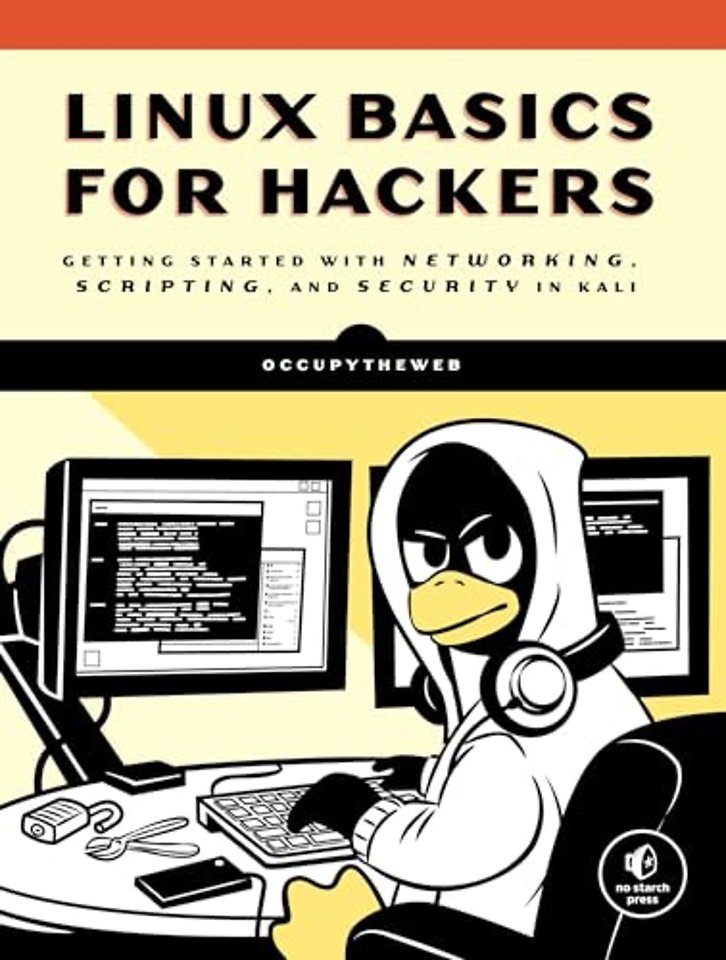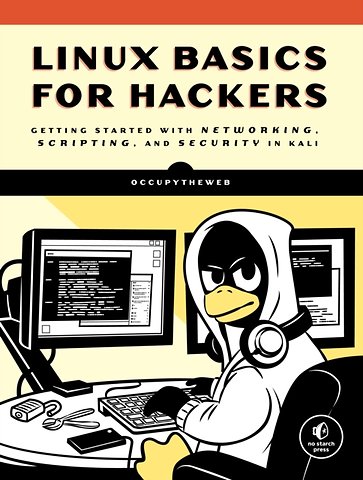Linux Basics For Hackers
Getting Started with Networking, Scripting, and Security in Kali
Paperback Engels 2018 1e druk 9781593278557Samenvatting
If you’re getting started along the exciting path of hacking, cybersecurity, and pentesting, Linux Basics for Hackers is an excellent first step. Using Kali Linux, an advanced penetration testing distribution of Linux, you’ll learn the basics of using the Linux operating system and acquire the tools and techniques you’ll need to take control of a Linux environment.
First, you’ll learn how to install Kali on a virtual machine and get an introduction to basic Linux concepts. Next, you’ll tackle broader Linux topics like manipulating text, controlling file and directory permissions, and managing user environment variables. You’ll then focus in on foundational hacking concepts like security and anonymity and learn scripting skills with bash and Python.
Practical tutorials and exercises throughout will reinforce and test your skills as you learn how to:
- Cover your tracks by changing your network information and manipulating the rsyslog logging utility
- Write a tool to scan for network connections, and connect and listen to wireless networks
- Keep your internet activity stealthy using Tor, proxy servers, VPNs, and encrypted email
- Write a bash script to scan open ports for potential targets
- Use and abuse services like MySQL, Apache web server, and OpenSSH
- Build your own hacking tools, such as a remote video spy camera and a password cracker
- Hacking is complex, and there is no single way in. Why not start at the beginning with Linux Basics for Hackers?
Covers Kali Linux and Python 3
Specificaties
Lezersrecensies
Inhoudsopgave
Title Page
Copyright Page
Dedication
About the Author
About the Technical Reviewer
BRIEF CONTENTS
CONTENTS IN DETAIL
ACKNOWLEDGMENTS
INTRODUCTION
What’s in This Book
What Is Ethical Hacking?
Why Hackers Use Linux
Downloading Kali Linux
Virtual Machines
Setting Up Kali
1 GETTING STARTED WITH THE BASICS
Introductory Terms and Concepts
A Tour of Kali
Basic Commands in Linux
Finding Stuff
Modifying Files and Directories
Go Play Now!
Exercises
2 TEXT MANIPULATION
Viewing Files
Filtering Text with grep
Using sed to Find and Replace
Viewing Files with more and less
Summary
Exercises
3 ANALYZING AND MANAGING NETWORKS
Analyzing Networks with ifconfig
Checking Wireless Network Devices with iwconfig
Changing Your Network Information
Manipulating the Domain Name System
Summary
Exercises
4 ADDING AND REMOVING SOFTWARE
Using apt to Handle Software
Adding Repositories to Your sources.list File
Using a GUI-based Installer
Installing Software with git
Summary
Exercises
5 CONTROLLING FILE AND DIRECTORY PERMISSIONS
Different Types of Users
Granting Permissions
Checking Permissions
Changing Permissions
Setting More Secure Default Permissions with Masks
Special Permissions
Summary
Exercises
6 PROCESS MANAGEMENT
Viewing Processes
Managing Processes
Scheduling Processes
Summary
Exercises
7 MANAGING USER ENVIRONMENT VARIABLES
Viewing and Modifying Environment Variables
Changing Your Shell Prompt
Changing Your PATH
Creating a User-Defined Variable
Summary
Exercises
8 BASH SCRIPTING
A Crash Course in Bash
Your First Script: “Hello, Hackers-Arise!”
Your Very First Hacker Script: Scan for Open Ports
Common Built-in Bash Commands
Summary
Exercises
9 COMPRESSING AND ARCHIVING
What Is Compression?
Tarring Files Together
Compressing Files
Creating Bit-by-Bit or Physical Copies of Storage Devices
Summary
Exercises
10 FILESYSTEM AND STORAGE DEVICE MANAGEMENT
The Device Directory /dev
Mounting and Unmounting
Monitoring Filesystems
Summary
Exercises
11 THE LOGGING SYSTEM
The rsyslog Logging Daemon
Automatically Cleaning Up Logs with logrotate
Remaining Stealthy
Summary
Exercises
12 USING AND ABUSING SERVICES
Starting, Stopping, and Restarting Services
Creating an HTTP Web Server with the Apache Web Server
OpenSSH and the Raspberry Spy Pi
Extracting Information from MySQL
Summary
Exercises
13 BECOMING SECURE AND ANONYMOUS
How the Internet Gives Us Away
The Onion Router System
Proxy Servers
Virtual Private Networks
Encrypted Email
Summary
Exercises
14 UNDERSTANDING AND INSPECTING WIRELESS NETWORKS
Wi-Fi Networks
Detecting and Connecting to Bluetooth
Summary
Exercises
15 MANAGING THE LINUX KERNEL AND LOADABLE KERNEL MODULES
What Is a Kernel Module?
Checking the Kernel Version
Kernel Tuning with sysctl
Managing Kernel Modules
Summary
Exercises
16 AUTOMATING TASKS WITH JOB SCHEDULING
Scheduling an Event or Job to Run on an Automatic Basis
Using rc Scripts to Run Jobs at Startup
Adding Services to Your Bootup via a GUI
Summary
Exercises
17 PYTHON SCRIPTING BASICS FOR HACKERS
Adding Python Modules
Getting Started Scripting with Python
Lists
Modules
Object-Oriented Programming (OOP)
Network Communications in Python
Dictionaries, Loops, and Control Statements
Improving Our Hacking Scripts
Exceptions and Password Crackers
Summary
Exercises
INDEX
Anderen die dit boek kochten, kochten ook
Rubrieken
- advisering
- algemeen management
- coaching en trainen
- communicatie en media
- economie
- financieel management
- inkoop en logistiek
- internet en social media
- it-management / ict
- juridisch
- leiderschap
- marketing
- mens en maatschappij
- non-profit
- ondernemen
- organisatiekunde
- personal finance
- personeelsmanagement
- persoonlijke effectiviteit
- projectmanagement
- psychologie
- reclame en verkoop
- strategisch management
- verandermanagement
- werk en loopbaan







